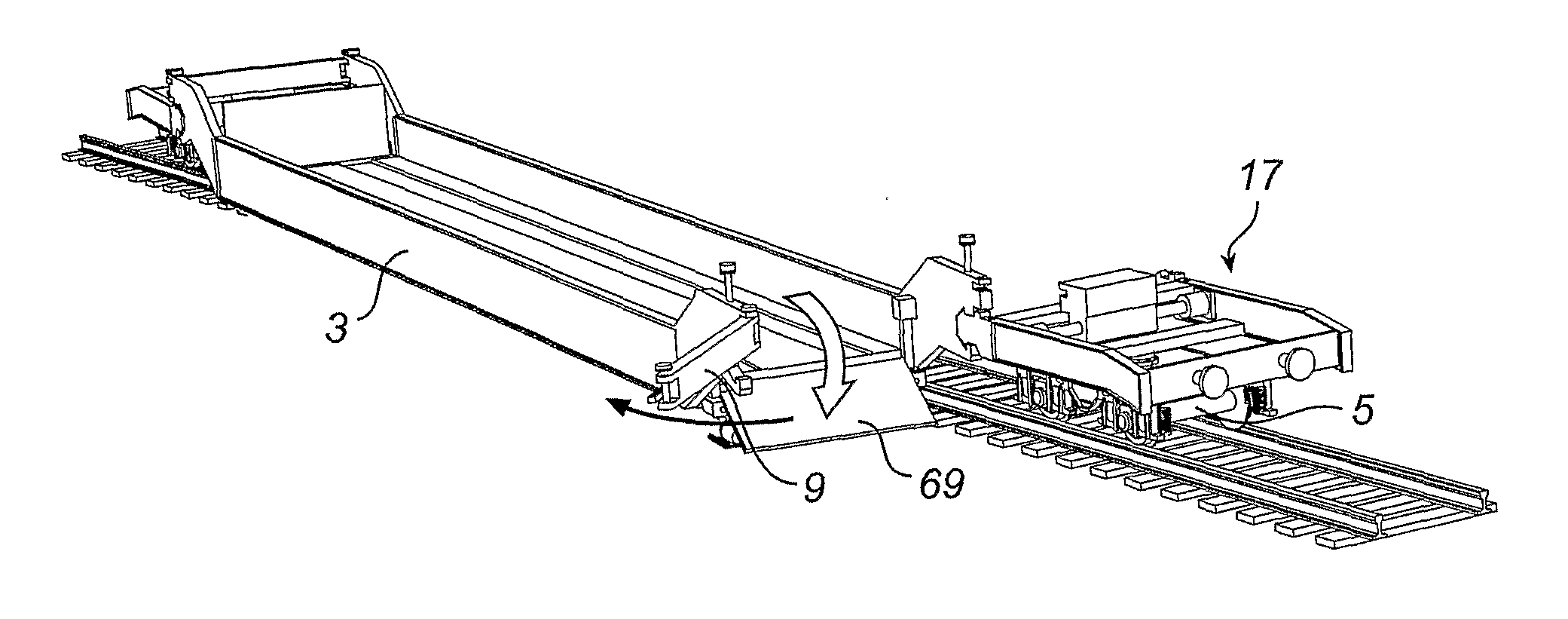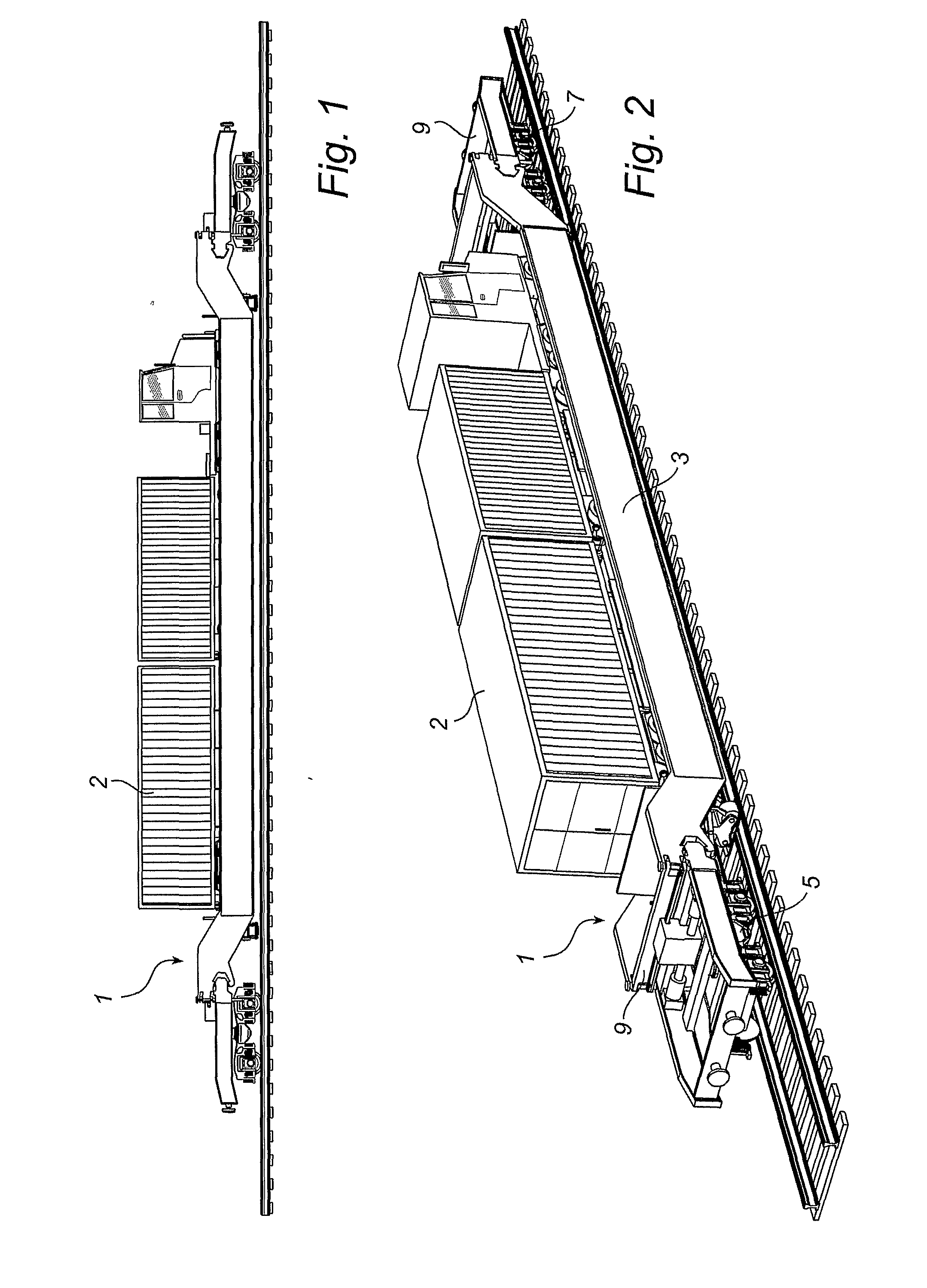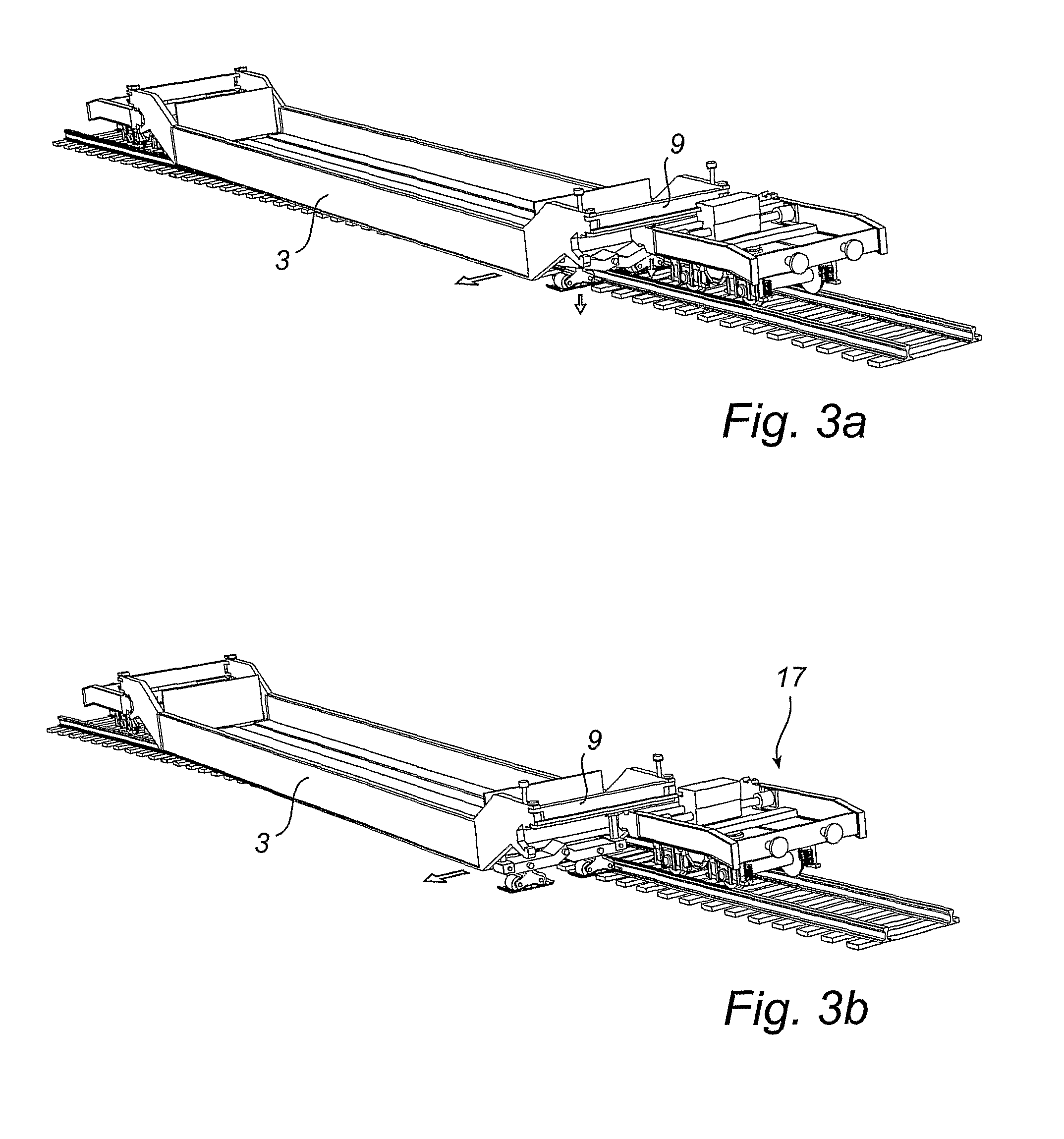Railway Wagon
- Summary
- Abstract
- Description
- Claims
- Application Information
AI Technical Summary
Benefits of technology
Problems solved by technology
Method used
Image
Examples
Embodiment Construction
[0022]The invention concerns a railway wagon which is designed for the modern concept of loading and unloading of entire vehicles. FIGS. 1 and 2 illustrate precisely a railway wagon 1 which carries a truck 2. FIG. 2 shows the principle of construction which enables the concept. The railway wagon comprises a load carrier 3, which is releasably connected to front and rear bogies 5, 7. When loading of a vehicle, for instance a truck, is to occur, one / the front end of the load carrier 3 is released and displaced, in this case by being pivoted on a pivot which is positioned at its other / rear end, relative to the bogie 3. A crossbar 9, which is included in a tilt-preventing device which will be described in more detail below, is released at its one end and pivoted away. Then the vehicle can drive up on the load carrier 3, after which the load carrier is returned to the initial position and locked. FIG. 14 shows that the other end of the load carrier 3 can also be pivoted outwards in a cor...
PUM
 Login to View More
Login to View More Abstract
Description
Claims
Application Information
 Login to View More
Login to View More - Generate Ideas
- Intellectual Property
- Life Sciences
- Materials
- Tech Scout
- Unparalleled Data Quality
- Higher Quality Content
- 60% Fewer Hallucinations
Browse by: Latest US Patents, China's latest patents, Technical Efficacy Thesaurus, Application Domain, Technology Topic, Popular Technical Reports.
© 2025 PatSnap. All rights reserved.Legal|Privacy policy|Modern Slavery Act Transparency Statement|Sitemap|About US| Contact US: help@patsnap.com



